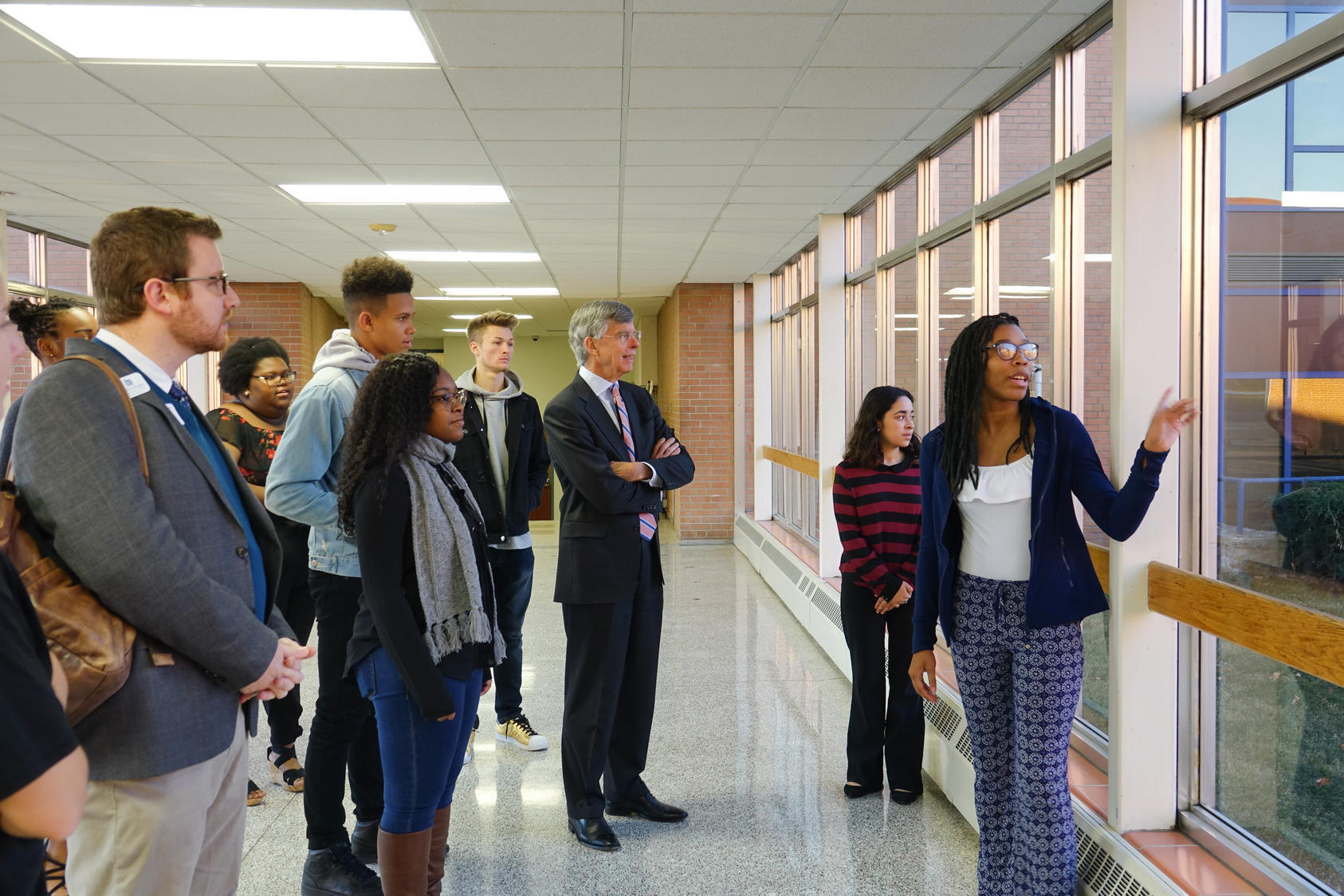A Teacher’s Response to “Is World Peace Possible?”
by Peace Teacher Amy Cameron
My high school was honored to have a recent visit from USIP Executive Vice President Ambassador William Taylor and Acting Director of Public Education Megan Chabalowski. As part of their presentation to my seniors, they answered questions. One student asked, “Is world peace possible?” A year ago, I probably would have had a knee-jerk reaction to such a question and said, “probably not.” That is, before I questioned my students about what they think world peace looks like. At the beginning of the year, their responses were bleak. “It is never going to happen,” they bemoaned. “Racism will always occur; people will always be violent.” For a teacher, this was an epiphany. World peace has always been an abstract, not a tangible. How can I give my students a path to take? How can they grow up believing they will be effective peacebuilders?

Before discovering the Peace Teachers Program’s shared curriculum and philosophy, I was ill-equipped to add “peacebuilding” into my day-to-day teaching. We read What is the What, by Dave Eggers, the traumatic journey of one of the “Lost Children,” of South Sudan. My students rarely venture outside a 10-mile radius – some for their entire lives. How can I help them understand that they are the future; they are global citizens? As USIP informs us, “conflict is inevitable,” so how do we approach global concerns without military action?

Obviously, my journey as a USIP Peace Teacher is arduous and thrilling at the same time. Imagine helping students find a path that leads them to community service, or even international negotiations and/or compromise? I have to let them know it is possible. Our work is just beginning; with the help of USIP, the staff, and my cohort teachers, I am creating a project based learning (PBL) unit that gives my students the autonomy to figure out what world peace looks like. They have already contributed to classroom discussions with their ideas: global peace means clean water, no starving children, literacy throughout the world, equitable living conditions, health care, etc. What will their presentations look like in March? I am excited for the possibilities; after all, though my students come from some of the lowest socioeconomic demographics in the area, they are generous in spirit and hopeful by nature. Isn’t that what we want for all our people? To be hopeful and generous of spirit? Even at our worst in the world, despite all odds, our students have learned that there is no philanthropic so unsubstantial that it bears abandoning. At our very worst, people can find humanity. Hopefully, my students find a place in the world that gives them the tools and the hope to pursue peace as an attainable expectation in their lifetimes.
The views expressed here are those of the author and not necessarily of the U.S. Institute of Peace.
Learn more about the USIP Peace Teacher Program.